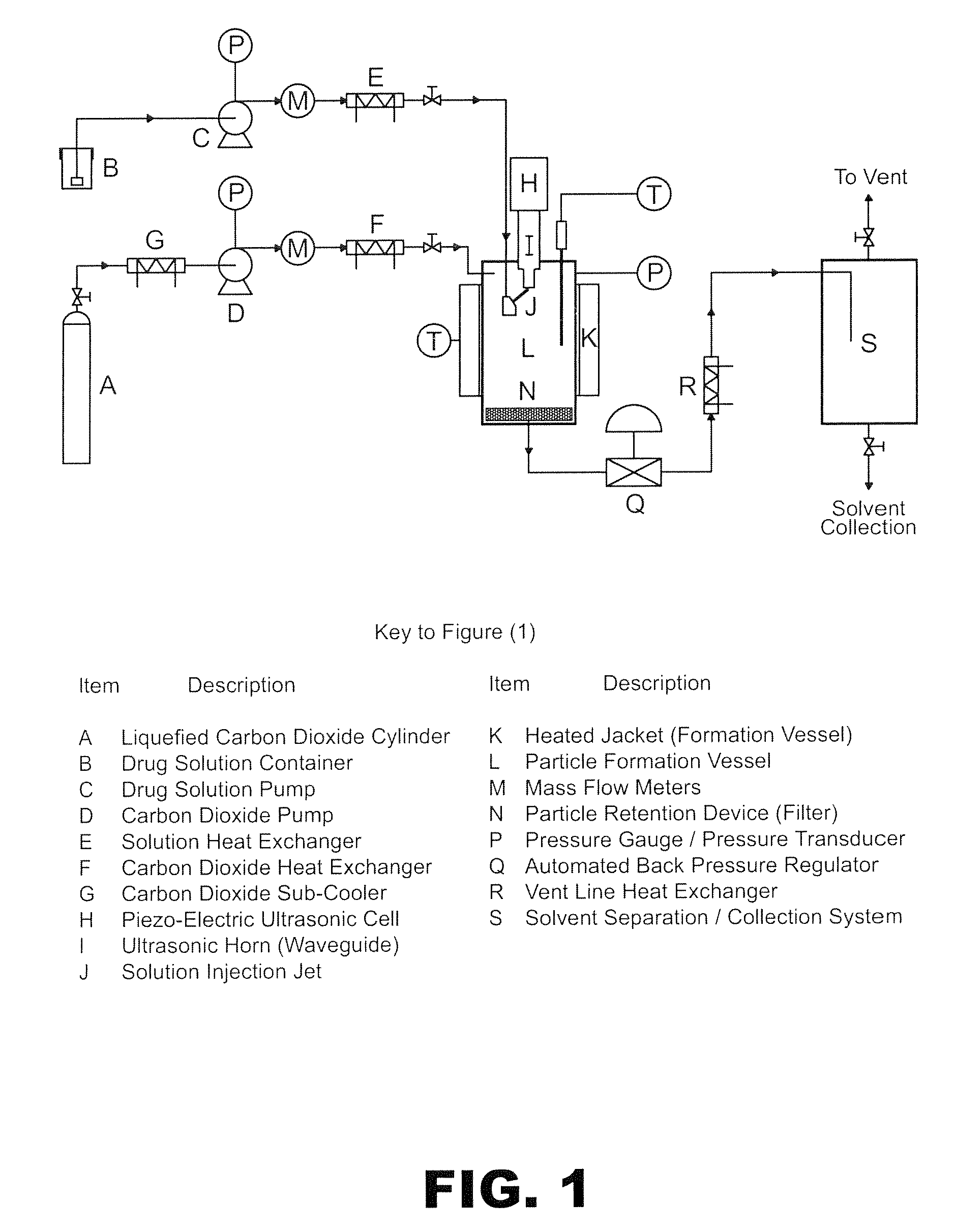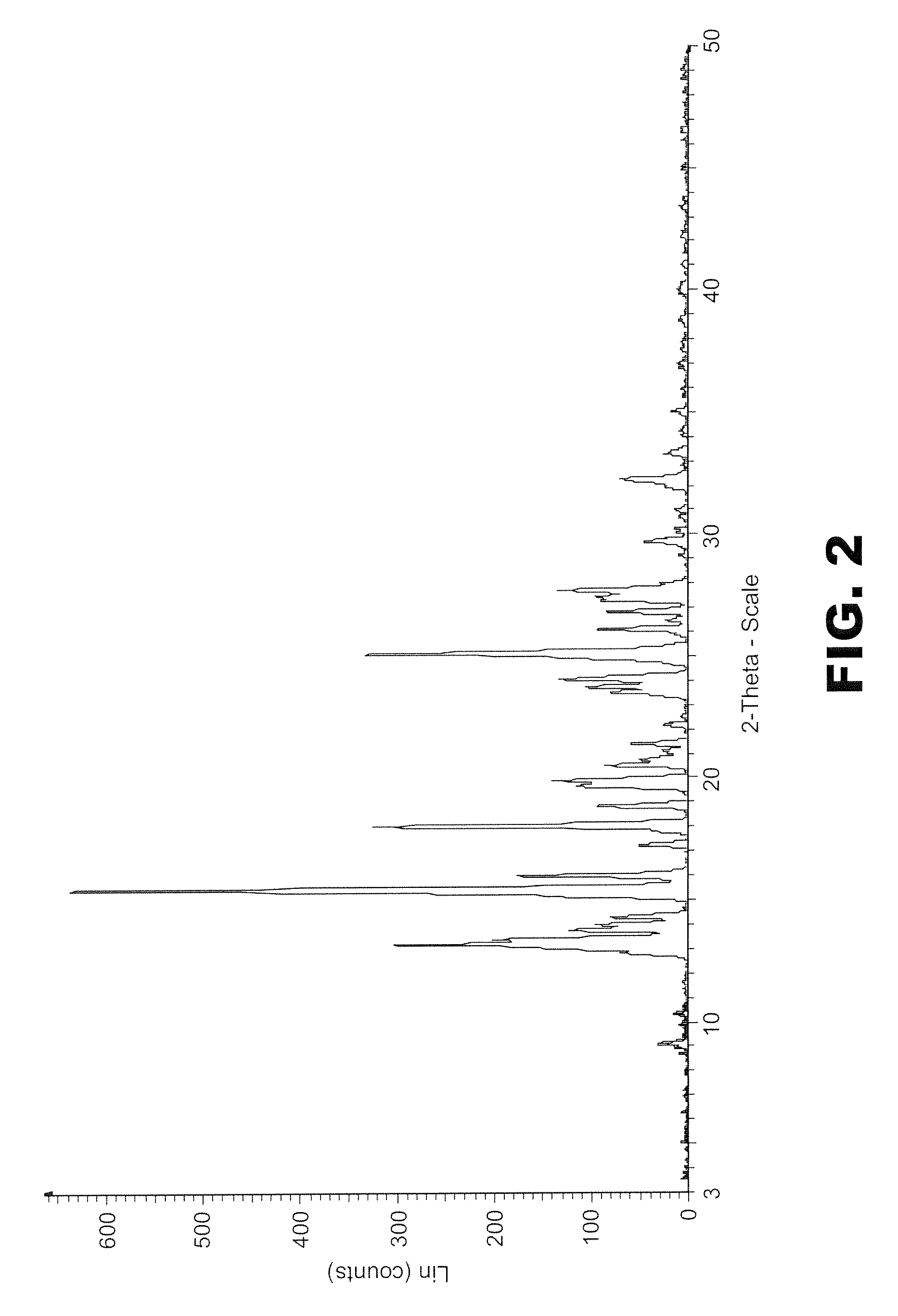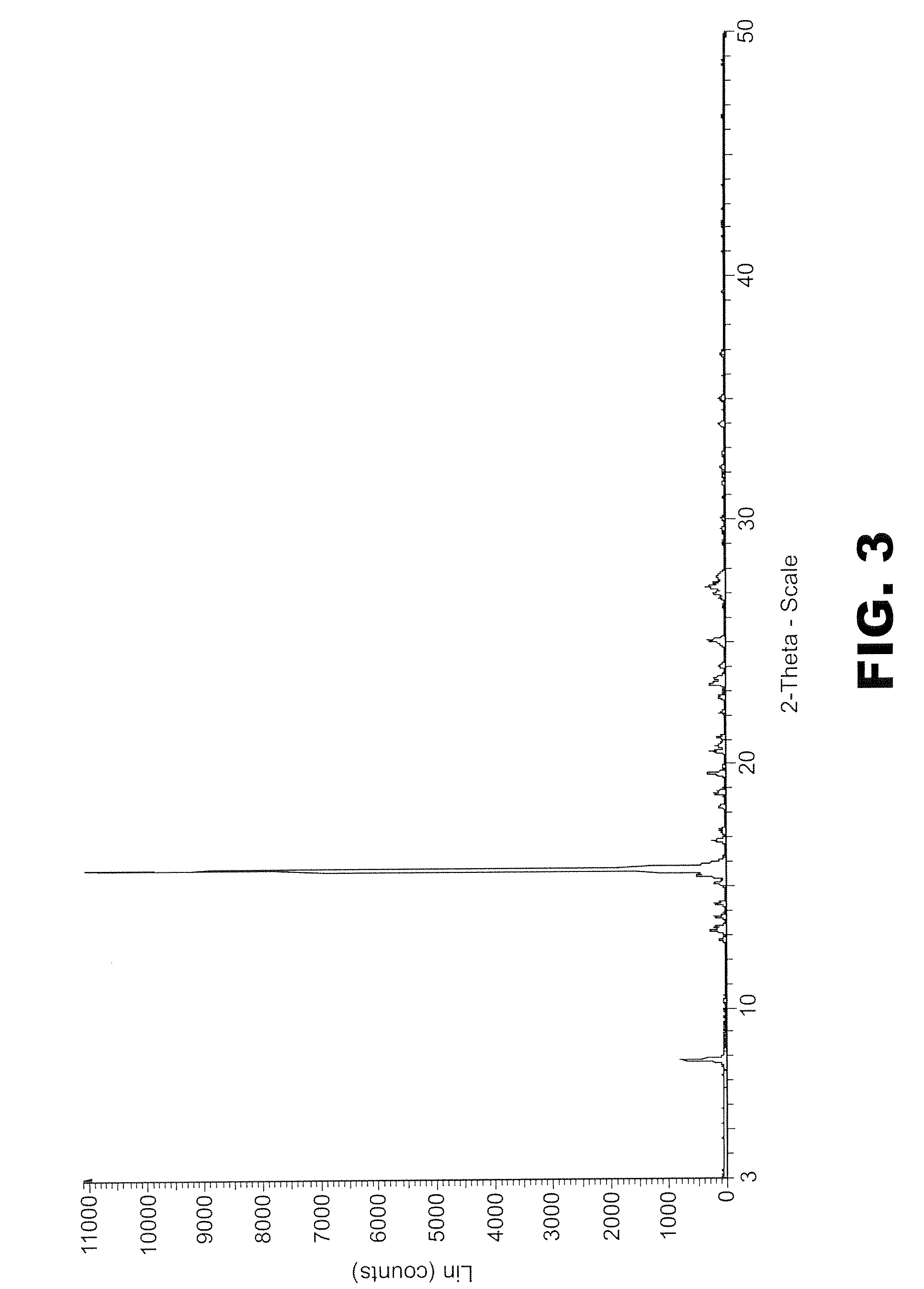Method of creating crystalline substances
a technology of crystalline substances and cocrystals, which is applied in the field of creating crystalline substances, can solve the problems of time and resources consumption, difficult process of developing an active pharmaceutical ingredient into the marketed dosage form, and limitations in solubility, stability, bioavailability and processability into different dosage forms
- Summary
- Abstract
- Description
- Claims
- Application Information
AI Technical Summary
Benefits of technology
Problems solved by technology
Method used
Image
Examples
example 1
Cocrystallisation of Carbamazepine and Acetylsalicylic Acid (Aspirin)
[0184]300 mg of carbamazepine (CBZ) was mixed with 228 mg of acetylsalicylic acid (aspirin) and dissolved in 22 ml of absolute ethanol to form the primary solution. It was then fed through a 0.075 mm diameter capillary tube at a rate of 0.3 ml / min to the SAS EM system described in FIG. 1. The distance between the tip of the capillary and the surface of the acoustic horn was 0.5 mm for all experiments of this invention. The pressure and temperature were kept constant during the experiment at 90 bar and 35° C. respectively. The flow of the CO2 during the entire experiment was kept at 20 g / min as measured at the pump head. The amplitude of the acoustic horn nozzle was set at 40% and its vibration frequency at 20 kHz. At the end of experiment the solution was stopped and the vessel was flushed with copious amount of fresh CO2 for 20 minutes. The system was then depressurised and the fine powder on the outlet filter col...
example 2
Cocrystallisation of Carbamazepine and Saccharine
[0188]In another experiment, 294 mg of carbamazepine was mixed with 300 mg of saccharine and dissolved in 30 ml of absolute ethanol. The resulting solution was then used in the SAS EM system described in FIG. 1. The flow rate of solution and CO2 measured at pump head were 0.5 ml / min and 20 g / min respectively with the pressure and temperature of the experiment at 100 bar and 40° C. respectively. The acoustic horn nozzle amplitude was 30%, and its vibration frequency 20 kHz, during solution introduction into the pressure vessel. At the end of run the solution was stopped and fresh CO2 was pumped for 20 minutes to dry the cocrystallised product. The system was then depressurised and the fine particulate product collected.
[0189]PXRD pattern of the sample (FIG. 5) clearly shows a crystalline profile.
[0190]In another run, the temperature was elevated to 60° C., while the pressure was reduced to 90 bar keeping all other parameters constant. ...
example 3
Difficult to Cocrystallise Materials
[0191]The main reason behind selecting such materials to investigate the possibility of using SCF technology and SAS-EM to produce cocrystalline products of said materials since conventional grinding methods, solvent drop grinding and solution evaporation methods proved unsuccessful in attaining these products.
[0192]150 mg of phthalic anhydride was mixed with 146 mg of 2-methyl 4-nitroaniline was mixed together and 20 ml of pure methanol was added to the mixture to form a solution. This solution was split into two 10 ml portions. One portion was then pumped at a rate of 0.2 ml / min into the SAS EM SCF crystallisation system held at 90 bar of pressure and 60° C. with scCO2 flowing at 16 gm / min as measured at the pump head. The amplitude was set to 30% and the vibration frequency to 20 kHz. The fine yellow powder was collected and analyzed using PXRD. The PXRD profile suggests it is a crystalline material (FIG. 8). The second portion was left in the ...
PUM
| Property | Measurement | Unit |
|---|---|---|
| pKa | aaaaa | aaaaa |
| solubility | aaaaa | aaaaa |
| solubility | aaaaa | aaaaa |
Abstract
Description
Claims
Application Information
 Login to View More
Login to View More - R&D
- Intellectual Property
- Life Sciences
- Materials
- Tech Scout
- Unparalleled Data Quality
- Higher Quality Content
- 60% Fewer Hallucinations
Browse by: Latest US Patents, China's latest patents, Technical Efficacy Thesaurus, Application Domain, Technology Topic, Popular Technical Reports.
© 2025 PatSnap. All rights reserved.Legal|Privacy policy|Modern Slavery Act Transparency Statement|Sitemap|About US| Contact US: help@patsnap.com



